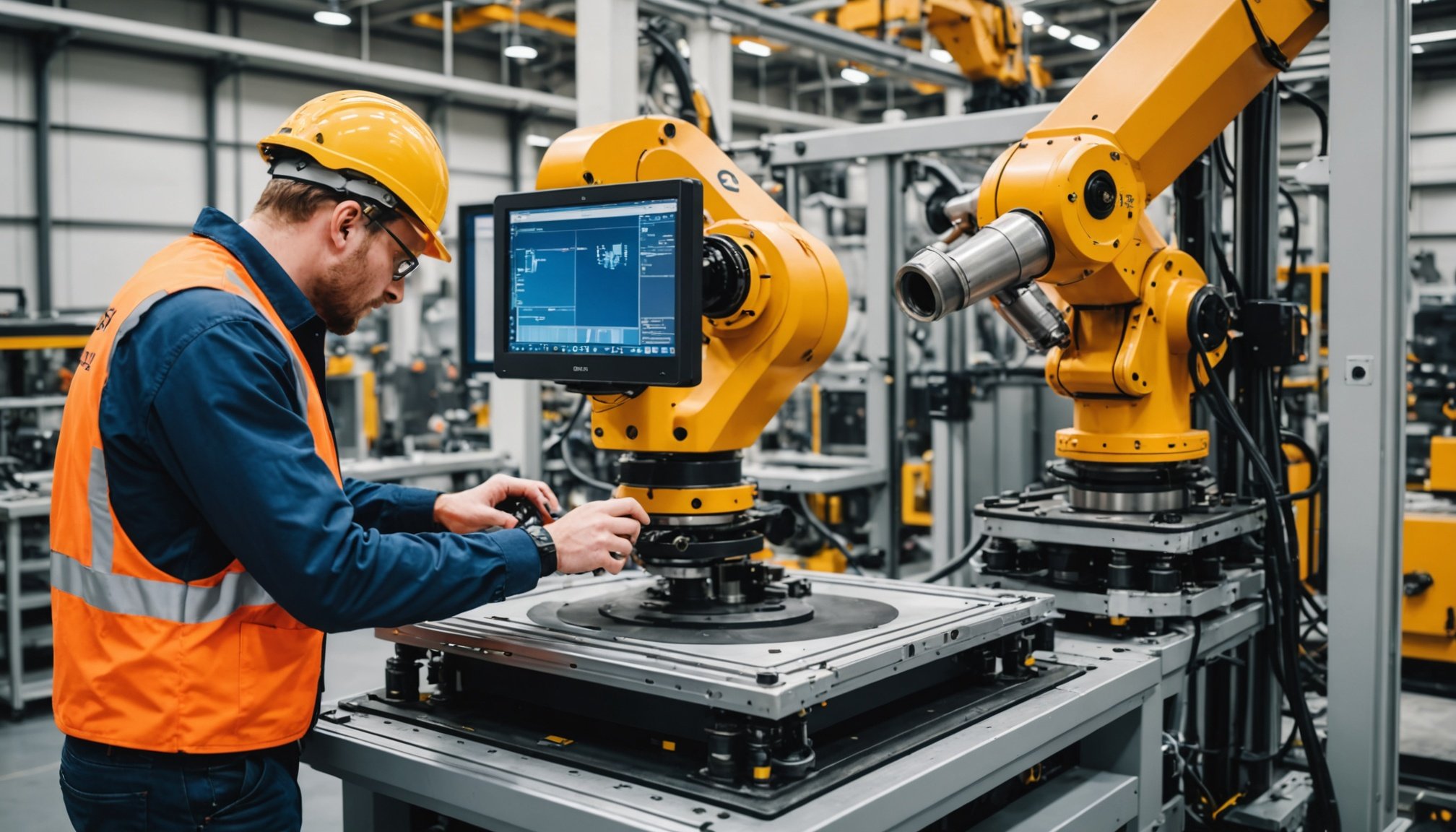Understanding Digital Twins
Digital twins are a revolutionary technology reshaping the manufacturing landscape. Essentially, a digital twin is a virtual replica of a physical asset, process, or system that is used to understand, predict, and optimize performance. By leveraging real-time data and advanced analytics, digital twins provide a powerful platform for innovation and efficiency improvements.
The technology behind digital twins involves a combination of sensors, IoT devices, and advanced software models, which mirror the physical world with exceptional accuracy. This seamless integration allows manufacturers to simulate, monitor, and even predict outcomes, mirroring scenarios in a controlled digital environment before applying them in the real world.
Have you seen this : Experience tranquil sleep: how cutting-edge smart beds boost sleep quality and health monitoring
In modern manufacturing, digital twins play a pivotal role, offering insight into system behaviors that were previously unattainable. They enable manufacturers to conduct fine-grained analyses and identify opportunities for improvement, effectively transforming how industries tackle challenges such as production downtime, maintenance scheduling, and resource utilization.
Digital twins represent a significant leap toward smarter and more agile manufacturing processes. Their adoption leads to reduced costs, increased productivity, and enhanced decision-making capabilities, making them an indispensable tool in today’s competitive manufacturing sector.
Also read : Boosting legal insight: how ai algorithms revolutionize document analysis efficiency
Functionality of Digital Twins in Manufacturing
In the realm of manufacturing, digital twin functionality hinges on the seamless integration of real-time data to replicate and analyze manufacturing processes. Digital twins assimilate vast streams of data from sensor-equipped machinery, enabling precise simulation and modeling capabilities. These virtual models allow for extensive scenario testing, ensuring that potential outcomes are thoroughly vetted before being applied in physical systems.
The feedback loops between digital and physical entities are pivotal. Continuous data exchange enables dynamic updates within the digital twin, mirroring real-world changes without delay. This allows for immediate detection of discrepancies or inefficiencies, offering manufacturers the agility to swiftly adapt processes and maintain optimal performance levels.
Moreover, the use of these feedback loops enhances predictive maintenance, where potential equipment failures are anticipated and preemptively addressed. This not only extends equipment longevity but also minimizes costly downtime. The ability to test changes and observe virtual impacts helps in refining manufacturing strategies efficiently.
Through digital twins, organizations can cultivate a controlled environment for exploration and innovation, propelling them toward ever more refined productivity and proficiency within their production lines.
Benefits of Implementing Digital Twins
Implementing digital twins in manufacturing offers a multitude of advantages, particularly in performance optimization. One of the foremost benefits lies in improved decision-making. By utilizing predictive analytics, digital twins anticipate issues and opportunities, allowing manufacturers to make data-driven choices with confidence. This proactive approach minimizes risks and enhances the ability to adapt swiftly to market dynamics.
Enhanced productivity and efficiency are also significant outcomes of digital twin integration. By simulating processes and testing scenarios virtually, manufacturers can detect inefficiencies and optimize workflows before applying changes to physical systems. This not only streamlines operations but also accelerates innovation by providing a platform for experimentation without halting production.
Cost reduction is another critical benefit. Through optimized resource management, digital twins reduce wastage and ensure precise allocation of materials and energy. This, combined with predictive maintenance capabilities, lowers maintenance costs and extends equipment lifespan, reducing the overall operational expenses.
By harnessing the benefits of digital twins, manufacturers are equipped with a robust toolset for achieving a competitive edge, leading to significant advancements in resource utilization, system reliability, and overall business performance.
Case Studies of Digital Twin Implementation in the UK
Case studies from the UK provide insightful practical applications of digital twins in varied sectors, showcasing their transformative power.
Case Study: Aerospace Industry
In the aerospace sector, digital twins have revolutionised production cycles and enhanced maintenance operations. By simulating aircraft systems, manufacturers gain predictive insights into potential issues, reducing downtime significantly. Key performance indicators, such as turnaround time and maintenance costs, have seen substantial improvement, emphasising the critical role of digital twins in aerospace manufacturing.
Case Study: Automotive Sector
In automotive manufacturing, digital twins streamline processes, resulting in notable real-world efficiency gains. Through virtual modeling, changes are assessed and optimized without physical intervention. This has led to increased productivity and lower error rates. A comprehensive analysis of the automotive sector shows lessons learned include the importance of integrating digital twins throughout product development stages, ensuring cohesive process optimization.
Case Study: Food Manufacturing
The food manufacturing industry benefits from digital twins in areas like quality control and safety enhancement. By simulating production lines, manufacturers can fine-tune processes for optimal output and adherence to health standards. Additionally, the adoption of digital twins contributes to sustainability, allowing for precise resource management and reduced environmental impact, underscoring their role in advancing the sector.
Statistics Highlighting the Impact of Digital Twins
The role of digital twins in the manufacturing sector is underscored by compelling statistics highlighting their growing influence. In the UK, adoption rates have surged, with recent surveys indicating that approximately 57% of manufacturers are exploring or implementing digital twin technologies. This high adoption rate reflects the industry’s recognition of digital twins’ transformative potential.
Performance improvements across manufacturing processes further validate this enthusiasm. Reports suggest that companies utilizing digital twins have observed efficiency boosts of up to 30%, alongside a significant reduction in equipment downtime by nearly 20%. These figures illustrate the profound impact digital twins are having on operational productivity.
Looking ahead, projections indicate a promising growth trajectory for digital twin technology. Analysts forecast an increase in market value, anticipating the global digital twin market to exceed $26 billion by 2025. This growth will be driven by advancements in complementary technologies such as AI and IoT, which enhance the already substantial benefits of digital twins.
These statistics not only demonstrate the current impact but also underscore the evolving role digital twins are poised to play in revolutionizing manufacturers’ approach to innovation and efficiency.
Expert Insights on Future Trends of Digital Twins in Manufacturing
Industry experts predict that digital twins will revolutionize manufacturing by offering unparalleled innovation and efficiency. Emerging technologies such as AI and IoT are pivotal in advancing digital twin capabilities, providing smarter data integration and analysis. These technologies enable advanced automation and predictive analytics, offering heightened precision in addressing manufacturing complexities.
Experts also foresee the integration of AI and IoT enhancing predictive maintenance, reducing unforeseen downtimes. This symbiotic relationship promises not only cost savings but also elevated operational standards, marking a significant shift in resource management.
However, the future adoption of digital twins is not without challenges. Data security and management pose significant considerations, as digital twins rely heavily on sensitive and vast data sets. Ensuring robust cybersecurity measures alongside effective data handling protocols is essential for successful implementation.
Moreover, the evolving nature of regulatory frameworks around these technologies demands adaptability from manufacturers. Understanding and aligning with these regulations is crucial for seamless integration. In summary, industry leaders embrace digital twins, yet they remain vigilant about potential hurdles, preparing to tackle obstacles while maximizing the benefits they envision.








